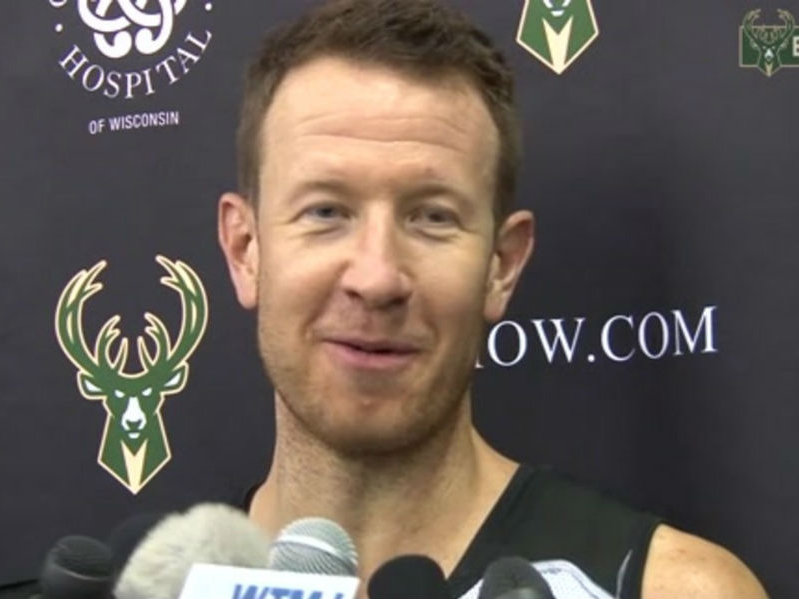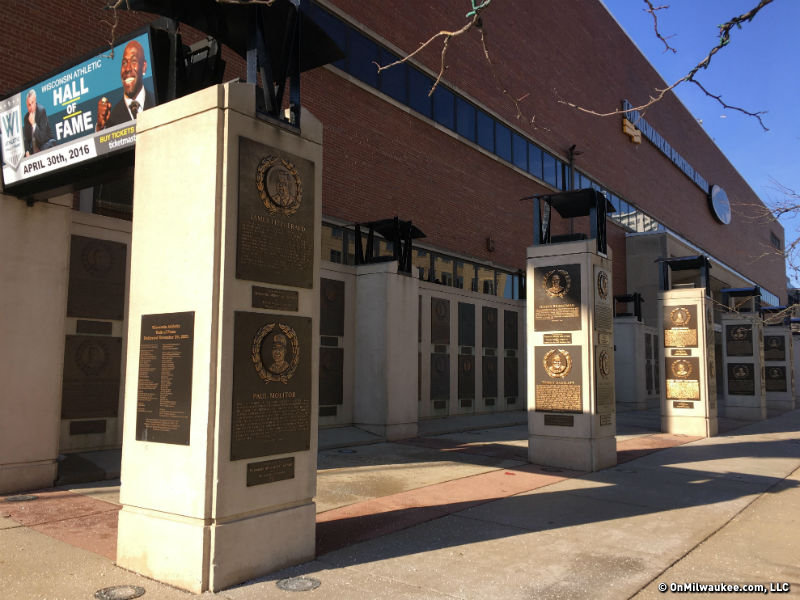With kids back in school, and many summer vacations spent, those who have the time and freedom to travel Wisconsin in the fall can find many advantages.
The crowds at many attractions often are less than in the peak of summer. Fishing can actually pick up in some areas. Fees on accommodations, golf courses and other attractions often are reduced.
The State Department of Tourism has issued a guide to finding the autumn spots for you. Here are some excerpts from the guide:
Fishing
With more than 15,000 lakes, fishing in Wisconsin is literally a year-round sport. However, for certain species, fall is peak season. Muskies, for instance, become much more active feeders when the water temperature drops below 60 degrees, which typically happens in mid-to late September.
As lake temperatures drop, muskies go on a feeding binge that lasts through November, fattening themselves up prior to winter on ciscoes, white suckers and yellow perch. It is during this time period that the biggest fish of the year are typically caught, such as the 53-in., 51-pound monster Tom Geld pulled in last November in Vilas County (one of the only 50+ pound muskies caught in the U.S. in recent years.)
While musky waters can be found across the state, they are most plentiful in the Northwoods, including Vilas and Oneida Counties; the greater Hayward area in Sawyer County; the Mercer area in Iron County; and the Spooner area in Washburn County.
Lake Michigan salmon fishing also reaches its peak during the fall season, though for different reasons. During this time, Chinook and, later, Coho start coming in from deep water to tributary streams to spawn. Chinook are the first to come in, typically spawning from mid-September into early October, while Coho and brown trout spawning begins in early October and runs through the middle to end of that month.
In the last several years state DNR officials have noticed a dramatic rise in out-of-state fishermen coming to Southeastern Wisconsin during this time.
"Fall salmon fishing here is just unbelievable," said Brad Eggold of the Wisconsin DNR. "These fish are not as large as coastal salmon but, since their stream migration distance is limited by dams, they are concentrated into a smaller area than in other parts of the country which translate into very high harvest rates."
Eggold cited a number of river and river mouth areas as fall salmon hotspots, including the Sheboygan River in Sheboygan County; the Menomonee and Milwaukee Rivers in Milwaukee County; the Pike River in Kenosha County and the Root River in Racine County. Additional statewide areas include the Manitowoc River, Kewaunee River, and Menomonee River in Marinette Co.
Prospective anglers are encouraged to visit www.dnr.wi.gov/fish/lakemich for more information or to call the Wisconsin DNR fishing hotline at (414) 382-7920.
Golf
Golf in Wisconsin is now played through October and even into November. Fall rounds generally have a delightfully luxurious and unhurried feel to them.
Courses tend to "green up" nicely, offering lush fairways draped in beautiful fall colors. Many of the state’s elite PGA Tour-caliber courses begin offering seasonal discounts in September, making it easy for average players to experience courses they might only dream about in high season.
While discounts and season closing dates vary from course to course (and depend on weather conditions) most of the state’s top facilities welcome fall players and group outings. Among the state’s top courses are Whistling Straits in Sheboygan (site of the 2007 U.S. Senior Open and 2010 PGA Championship); Blackwolf Run in Kohler (site of the 1998 U.S. Women’s Open); Brown Deer in Milwaukee (home of the US Bank Championship); Erin Hills near Hartford; Northern Bay in Arkdale; The Bull at Pinehurst Farms in Sheboygan Falls, Troy Burne in Hudson; Coldwater Canyon in Wisconsin Dells; University Ridge in Verona; and Grand Geneva and Geneva National in Lake Geneva.
Biking
Biking is great way to take in the seasonal display, particularly since the traffic across Wisconsin State Parks/Trails system is greatly reduced compared to summer. With its extensive system of on-road, mountain bike and bike touring trails, Wisconsin is viewed by many insiders as the best Midwestern state for bicycling.
The newest trail to the area is the Badger State Trail connecting Madison to the Illinois border with 40 miles of crushed limestone to accommodate bicycling, walking, hiking and snowmobiling. Trail users will find they are connected to the Capital City, Military Ridge and Sugar River state trails; Madison bikeway system; Capital Springs and New Glarus Woods state parks; Albany State Wildlife Area; Ice Age National Scenic Trail; 13 communities in southern Wisconsin and northern Illinois; and numerous local parks.
Wisconsin is also universally recognized as the nation’s leader in "rails-to-trails" conversions. These former rail beds feature minimal grades and no motorized traffic, making them extremely popular with families, novices and experts alike. Among the best known are the Elroy-Sparta Trail in west central Wisconsin (the nation’s first rails-to-trails conversion); the Gandy-Dancer Trail in northwestern Wisconsin; the Bearskin-Hiawatha Trail in northern Wisconsin; the Ahnapee Trail in Kewaunee and Door counties; and the Oak Leaf Trail in Milwaukee.
On-road touring opportunities can be found throughout Wisconsin, including several with historical themes, such as the Lead Mining Heritage Tour in Grant County; the Frank Lloyd Wright Tour in Iowa and Sauk counties; and the Great River Road South tour, which runs through La Crosse, Vernon and Crawford counties.
Camping
It may be getting cooler outside but that doesn’t mean you can’t enjoy that one last camping trip of the season. Wisconsin’s state parks and forests house more than 4,600 campsites. Thirty-two parks remain open throughout fall and winter, including Governor Dodge State Park. Plus, the state features more than 1.5 million acres of fun in the Chequamegon-Nicolet National Forest. The forest is comprised of four different sections and offers more than 50 separate campgrounds and recreation areas.
Sites typically include road access, a fire ring and a picnic table and can be used by either vehicles or tent campers. There are also backpack, walk-in and canoe-in sites, sites with electrical hookups, and sites designed specifically for tents or vehicle campers.
Getting your spot is a snap. ReserveAmerica (1-888-947-2757; www.reserveamerica.com) has campground maps and details along with online registration or a call-in number. Zoom in on a specific map to get a better handle on where you’ll be enjoying your overnight adventure.
Hiking
Crisp air, colorful leaves and honking geese create a backdrop for enchanting autumn hikes in Wisconsin’s parks and recreation areas. One of the state’s most popular destinations is Door County’s Peninsula State Park, which features nearly 35 miles of trails through hardwood forests and along towering limestone bluffs. Walkers can also enjoy the White Cedar Nature Center and the 132-year-old Eagle Bluff Lighthouse.
Blue Mound State Park in Blue Mounds is a favorite hiking spot in southwestern Wisconsin. Set atop the westernmost of two mounds, walkers can experience wooded trails, including the Military Ridge State Trail, and a spectacular view of the countryside from the park’s perch, the highest point in southern Wisconsin.
The Wisconsin Ice Age Trail offers some of the best fall scenery in the state and a chance for an enriching and educational trek. Information centers, such as the Ice Age Interpretive Center, and guided walks are available along the trail, which is one of the country’s eight National Scenic Trails.
For free Wisconsin travel-planning guides and information, the public can call the Wisconsin Department of Tourism’s toll-free number at (800) 432-8747 or visit travelwisconsin.com. Visitors can also obtain guides and information at the Wisconsin Welcome Centers, located in select state-border cities.







